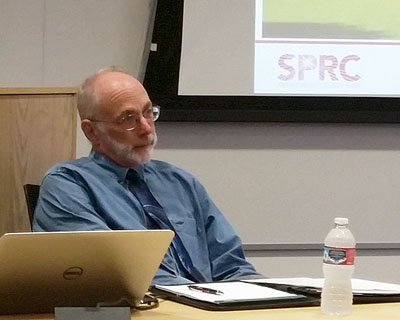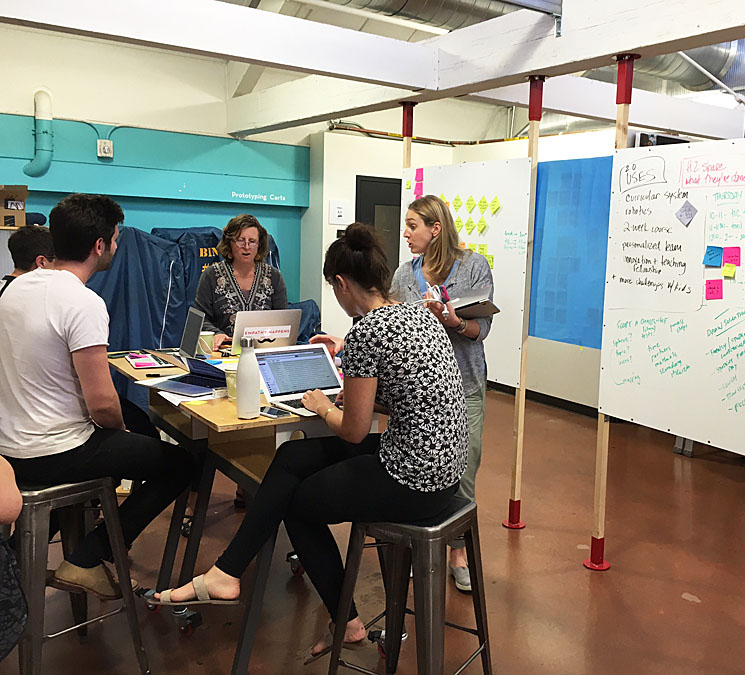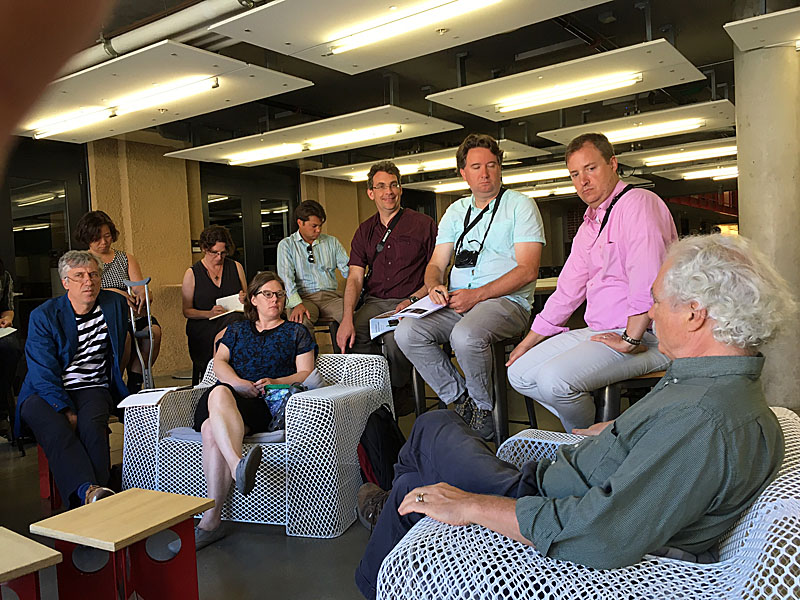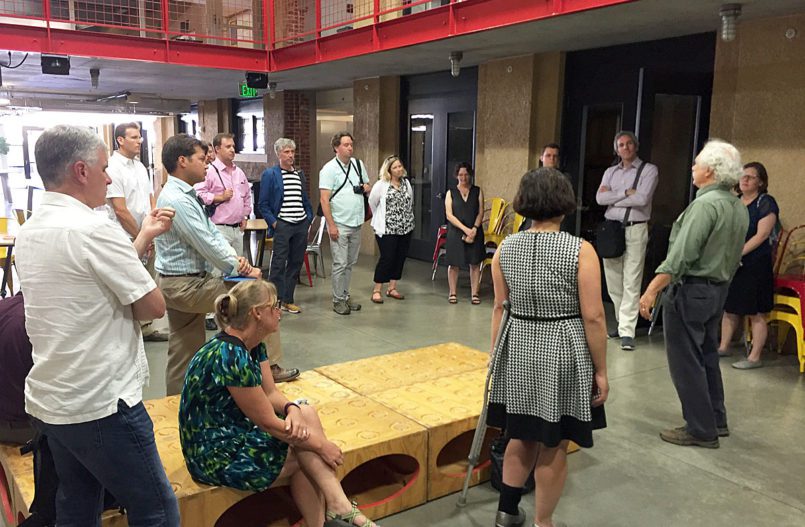Faculty in Silicon ValleyDaily posts and photos from the ACM SAIL faculty seminar on Silicon Valley as an Innovation Ecosystem. |
Day 3 – Wednesday, July 13, 2016
Posted by Sian Muir, Entrepreneur-in-Residence, St. Olaf College
This is something we could all get used to. The predictably warm weather, the perfect drip coffee, made to order at Philz, and sleeping again in dorm rooms. OK, so maybe not the latter, but as we head off to Stanford University for a day of hearing from renowned experts in the field of innovation we are all feeling pretty excited.
 Tom Baer, Executive Director of the Stanford Photonics Research Center
Tom Baer, Executive Director of the Stanford Photonics Research Center
Tom Baer, a Lawrence graduate, has very graciously agreed to meet with us to share his insights on sustainable innovation and the role that Stanford plays in the Silicon Valley ecosystem. For those of us who teach in the innovation space, this is the equivalent to a teenager meeting Justin Bieber. Tom, however, is delightfully welcoming and open to a dialogue on the similarity between liberal arts and entrepreneurship.
Our SAIL seminar team certainly appreciated this rare chance to be able engage with an industry expert on such a relational level. Tom shared his insights on the innovation process and what it takes to develop and commercialize research. It was soon clear that Stanford has developed mutually beneficial relationships with both industry and potential inventors that allow for this rich innovative eco-system to thrive.
 A team at work at the d.school
A team at work at the d.school
Tom shared that instead of focusing on ‘big F’ faculties, Tom built cross-functional teams based on ‘affiliates’ — typically based on industry. For example, a team might work on transport solutions. Tom was careful to highlight that while they have had a number of successes, these commercial enterprises were not proportionally a major contributor to Stanford financially. Rather, the relationships they have built with their industry partners and the impact of these experiential activities on student education are the key benefits to the college.
Tom shared, “The primary goal is to transfer Stanford technology for society’s use and benefit.” It is clear that they have done this very successfully and that we can learn a great deal from the processes they have incorporated. Tom spent two hours with us, took us to lunch at the Stanford Faculty Club, and then he and Bobbi hosted us for a delicious meal at their home capably prepared by Bobbi and their son, John.
 Sign at the d.school
Sign at the d.school
In his closing comments he shared that he (and Bobbi) deeply appreciate the work that we do as liberal arts educators. Speaking on behalf of our SAIL team, the feeling is mutual and we are very grateful for this unique opportunity to meet with someone who is so pivotal to value creation in the United States and so incredibly generous with his time and sharing his insights.
Our afternoon at Stanford was equally impressive when we were treated to a tour of the d.school by one of the original founders of the program, Terry Winograd. Terry met us in the open courtyard of the innovation space and showed us around.
There was obvious envy from the SAIL participants as we wandered through the spaces that were designed for ultimate versatility and flexibility (see photos). Terry shared that classes at the d.school are team taught and cross-disciplinary teams of mainly master’s students worked using the now famous design thinking process to solve real world problems. Teams are also typically assigned an industry mentor who donates their time.
 Discussion with Colorado College alumnus Terry Winograd (right), who was Ph.D. thesis advisor to Google founders Larry Page and Sergey Brin.
Discussion with Colorado College alumnus Terry Winograd (right), who was Ph.D. thesis advisor to Google founders Larry Page and Sergey Brin.
After our tour, we were treated to an informal Q & A with Terry for over an hour where questions were wide ranging from “what was it like to supervise Larry Page”? to “how do you define creativity”? Terry candidly responded in a very open and conversational manner.
Again, it is notable that someone so eminent in his field was so willing to share his wisdom so generously. Is this, perhaps, indicative of a culture of sharing and collaboration that has made Stanford so successful as an innovation hub?







